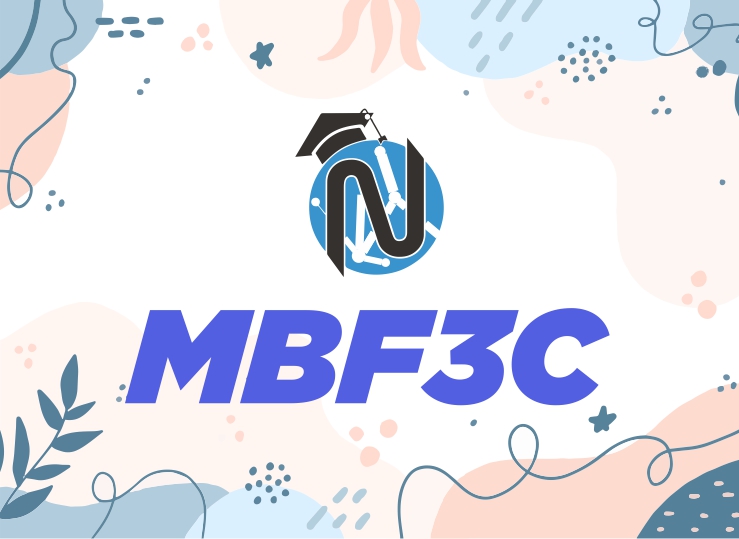
Mathematics (MBF3C)
Course Description
This course enables students to broaden their understanding of real-world applications of mathematics. Students will analyse data using statistical methods; solve problems involving applications of geometry and trigonometry; solve financial problems connected with annuities, budgets, and renting or owning accommodation; simplify expressions; and solve equations. Students will reason mathematically and communicate their thinking as they solve multi-step problems. This course prepares students for college programs in areas such as business, health sciences, and human services, and for certain skilled trades.
For Ministry Guideline Click Here
| Units | Descriptions | Length (Approximately) |
|---|---|---|
| 1. | Mathematical Models This unit begins by discussing the real-world applications using the approximation of parabolas. In the next section students will be given a quadratic equation in standard form (y = ax2 + bx + c) or in vertex form (y = a(x-h)2 + k). From the equation they will set up a table of values and use this to graph the parabola by hand and then using online graphing software. Once students know how to set up a table of values and graph the functions by hand and with using software, they will be encouraged to interpret the effects of the different parameters. Students will also look at examples of Quadratic Relationships that are found in real-life situations and interpret their charts and graphs. |
25 hours |
| 2. | Personal Finance When making major purchases such as cars, homes and recreation vehicles, the cost of borrowing increases because the interest is compounded. Likewise, when interest is earned on interest, we say the interest compounds. The first topic of the unit will be an exploration of compound interest examples, problems and how to use the graphing calculator to solve them. Then the next part of the unit will be done as an assignment - students will be investigating various financial institutions and comparing their services, costs, charges etc. In the last one third of the unit students will look at the financial advantages of buying a new vehicle, a used vehicle or leasing a vehicle. |
25 hours |
| 3. | Geometry We look at different ways of picturing solid shapes. We use isometric, perspective and orthographic methods to represent 3-dimensional objects. We investigate the nets of shapes, and also look at applications of geometry in design, art and architecture. We end our course with a unit on trigonometry. Students will be introduced to how trigonometry is used in real life. They will develop an understanding of the basic trigonometric ratios. The Sine Law will be explored as a tool for non-right-angled triangles. The Cosine Law and its application will conclude the unit and course |
25 hours |
| 4. | Data Management Welcome to the wonderful world of Data Management. Whether students are interested in sports, business, travel or just working with numbers they will see applications for the skills taught in this unit. Students will be gathering data, designing questionnaires, conducting surveys, interpreting and analysing findings. The unit begins with an investigation of the various methods of surveying a population. Next the design of the questionnaire to collect data will be examined. Bar graphs or histograms and circle graphs are used to represent data. Then students will also use software to display data. Students will analyse their findings and assess their reliability. Students will also begin an exploration of probability and relative frequency. |
25 hours |
| The final assessment task is to provide students to do Exam Review (4 Hrs) +Formative Exam (2 Hrs) +Culminating Task (2 Hrs) + Final Exam (2 Hrs) | 10 hours | |
| Total | 110 hours | |
Overall Curriculum Expectations
By the end of this course, students will:
- make connections between the numeric, graphical, and algebraic representations of quadratic relations, and use the connections to solve problems.
- demonstrate an understanding of exponents, and make connections between the numeric, graphical, and algebraic representations of exponential relations.
- describe and represent exponential relations, and solve problems involving exponential relations arising from real-world applications.
By the end of this course, students will:
- compare simple and compound interest, relate compound interest to exponential growth, and solve problems involving compound interest
- compare services available from financial institutions, and solve problems involving the cost of making purchases on credit.
- interpret information about owning and operating a vehicle, and solve problems involving the associated costs
By the end of this course, students will:
- represent, in a variety of ways, two-dimensional shapes and three-dimensional figures arising from real-world applications, and solve design problems.
- solve problems involving trigonometry in acute triangles using the sine law and the cosine law, including problems arising from real-world applications.
By the end of this course, students will:
- solve problems involving one-variable data by collecting, organizing, analyzing, and evaluating data.
- determine and represent probability and identify and interpret its applications.
Assessment & Evaluation of student performance
Formative assessments are learning practices that provide important feedback to student progress. Examples include homework and quizzes.
Summative assessments form a foundation for final mark allotment at the end of the unit, term and final evaluation.
An achievement chart will be given to students at regular intervals and the purpose of the charts is to provide feedback to students in relation to content and performance strands.
| Knowledge and understanding | Communication | Thinking Inquiry and Problem solving | Application |
|---|---|---|---|
| 25% | 25% | 25% | 25% |
Unit Tests, Written assignments, presentations, Classroom Observations and Classroom conversations.










